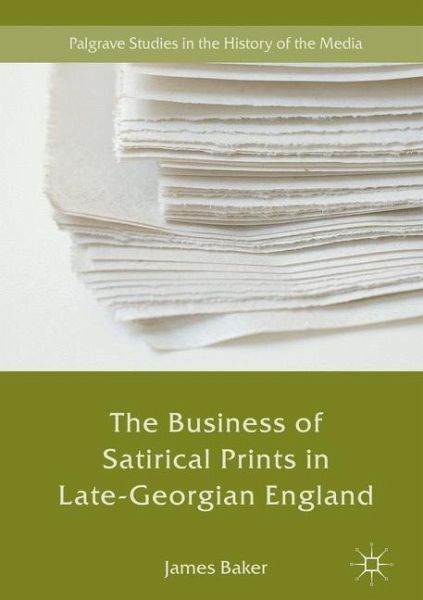
The Business of Satirical Prints in Late-Georgian England
Versandkostenfrei!
Versandfertig in 6-10 Tagen
68,99 €
inkl. MwSt.
Weitere Ausgaben:

PAYBACK Punkte
34 °P sammeln!
This book explores English single sheet satirical prints published from 1780-1820, the people who made those prints, and the businesses that sold them. It examines how these objects were made, how they were sold, and how both the complexity of the production process and the necessity to sell shaped and constrained the satiric content these objects contained. It argues that production, sale, and environment are crucial to understanding late-Georgian satirical prints. A majority of these prints were, after all, published in London and were therefore woven into the commercial culture of the Great...
This book explores English single sheet satirical prints published from 1780-1820, the people who made those prints, and the businesses that sold them. It examines how these objects were made, how they were sold, and how both the complexity of the production process and the necessity to sell shaped and constrained the satiric content these objects contained. It argues that production, sale, and environment are crucial to understanding late-Georgian satirical prints. A majority of these prints were, after all, published in London and were therefore woven into the commercial culture of the Great Wen. Because of this city and its culture, the activities of the many individuals involved in transforming a single satirical design into a saleable and commercially viable object were underpinned by a nexus of making, selling, and consumption. Neglecting any one part of this nexus does a disservice both to the late-Georgian satirical print, these most beloved objects of British art, and tothe story of their late-Georgian apotheosis - a story that James Baker develops not through the designs these objects contained, but rather through those objects and the designs they contained in the making.
This book explores English single sheet satirical prints published from 1780-1820, the people who made those prints, and the businesses that sold them. It examines how these objects were made, how they were sold, and how both the complexity of the production process and the necessity to sell shaped and constrained the satiric content these objects contained. It argues that production, sale, and environment are crucial to understanding late-Georgian satirical prints. A majority of these prints were, after all, published in London and were therefore woven into the commercial culture of the Great Wen. Because of this city and its culture, the activities of the many individuals involved in transforming a single satirical design into a saleable and commercially viable object were underpinned by a nexus of making, selling, and consumption. Neglecting any one part of this nexus does a disservice both to the late-Georgian satirical print, these most beloved objects of British art, and to the story of their late-Georgian apotheosis - a story that James Baker develops not through the designs these objects contained, but rather through those objects and the designs they contained in the making.
This book explores English single sheet satirical prints published from 1780-1820, the people who made those prints, and the businesses that sold them. It examines how these objects were made, how they were sold, and how both the complexity of the production process and the necessity to sell shaped and constrained the satiric content these objects contained. It argues that production, sale, and environment are crucial to understanding late-Georgian satirical prints. A majority of these prints were, after all, published in London and were therefore woven into the commercial culture of the Great Wen. Because of this city and its culture, the activities of the many individuals involved in transforming a single satirical design into a saleable and commercially viable object were underpinned by a nexus of making, selling, and consumption. Neglecting any one part of this nexus does a disservice both to the late-Georgian satirical print, these most beloved objects of British art, and to the story of their late-Georgian apotheosis - a story that James Baker develops not through the designs these objects contained, but rather through those objects and the designs they contained in the making.












